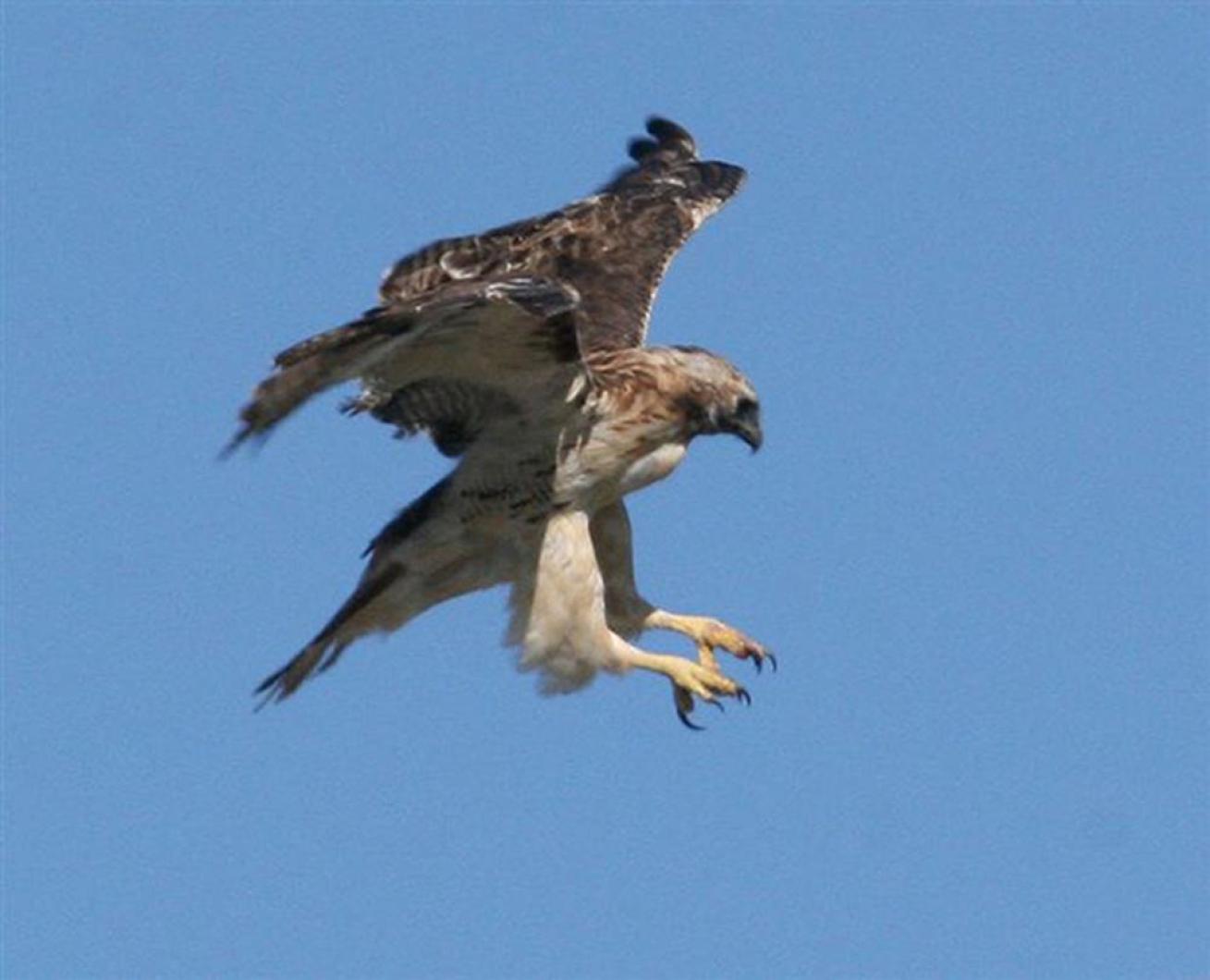Regrettably, a very brief summary will suffice for birds brought here by ex-hurricane Noel, which massaged the Vineyard with 60 mile-per-hour gusts and about two inches of rain last Saturday. Local birders were hopeful: tropical systems moving north along the East Coast can produce spectacular birding, blowing in anything from offshore migrants like phalaropes, to southern seabirds like sooty terns, to songbirds like blue grosbeaks diverted from their usual migration routes.
But Noel was a bust. The storm’s disappointing effect probably stemmed from its late date and from its shape and track (to the east of us), with the counterclockwise storm circulation producing north winds with little easterly component. To hit the Vineyard, a storm-driven bird would first have had to stay aloft while traveling around much of the huge storm’s circumference. And then it would have needed to pass over the upper Cape, which would have offered a first (and irresistible) opportunity to land.
Having birded on Saturday at First Encounter Beach in Eastham, inside the elbow of Cape Cod, veteran birder Blair Nikula summed up his experience in a Nov. 4 internet post: after a promising start, says Blair, “it kind of fizzled out.” Northern Gannets were plentiful there, driven into Cape Cod Bay by the storm. But alcids, jaegers and shearwaters, which can deluge First Encounter during a northeast blow, were present only by the tens or scores. The Vineyard did even less well: of reports received by the Bird Line (508-627-4922), only a concentration of Bonaparte’s Gulls at Katama Bay and a pair of very late common terns (found at Mattakeset by Allan Keith) appeared to be storm-related. If you rode out Noel at home with a cup of tea and a book, good call -- you didn’t miss much.
That’s not to say that birding at this season is dull. True, the vast majority of our migratory breeders have left, and most of the transients we’ll see this fall have passed through. But vagrants remain very much possible, and even the normal seasonal mix of sparrows, raptors, waterfowl, and finches can be fun.
Bird Sightings
Purple finches and pine siskins remain plentiful on the Vineyard, occurring both as feeder visitors and fly-overs. Sally Anderson, Laurel Walker, and Catherine Colon found siskins at Gay Head on Oct. 30, and Sally had one at her feeder in West Tisbury a few days later. It doesn’t appear that other winter finches have made it to the Island yet, but birders in mainland Massachusetts have begun reporting redpolls, evening grosbeaks, Bohemian waxwings, and both red and white-winged crossbills. Any or all of these species could appear on the Vineyard at any time, and in general, early signs are that this will be an excellent winter for these irruptive migrants.
Lanny McDowell and Allan Keith have both noted pectoral sandpipers, among the latest of our shorebird migrants, on fields around Katama. And on Norton Point Beach, Allan found an adult lesser black-backed gull on Nov. 2. The publicly-accessible portion of Squibnocket Pond, viewable from the parking lot, has produced a Virginia rail (found on Tuesday by Allan and Sally Anderson), a pied-bill grebe (found by Sally and her party on Oct. 30), and a common moorhen (reported over several days by multiple observers). A blue-winged teal at the Keith Farm in Chilmark lingered at least until Oct. 29.
The peak of the accipter migration may have been Oct. 24, when Allan noted more than 15 sharp-shinned hawks at Gay Head. Numbers of wintering waterfowl have been growing rapidly, especially up-Island: Allan estimated about 10,000 birds off Gay Head, mostly common eiders and surf scoters, and the flock off Squibnocket is also growing. Sally noted a northern shrike and a chat at Gay Head on Nov. 1, and Allan and Sally turned up a vesper and a clay-colored sparrow at the cliffs on Tuesday.
The Vineyard hosts one of the northernmost populations of barn owls in the East, but in recent years a series of hard winters came close to extirpating these birds. Reports (or rather the absence of reports) suggested that our population had dipped down to one pair, the venerable Felix Neck owls, by the end of the winter of 2005-2006. But barn owls are both mobile and prolific: whether through immigration or industrious reproduction, our barn owls are bouncing back, as they have done historically from past brushes with extirpation.
The precarious state of our barn owl population and the location of birds on private property prevent this column from reporting exact locations. But we received reports of an occupied nest box in Chilmark and of a juvenile barn owl (strong evidence of a breeding pair) at another Chilmark location. Barring more arctic winters, steady growth in the numbers and distribution of this species can be expected.




Comments
Comment policy »